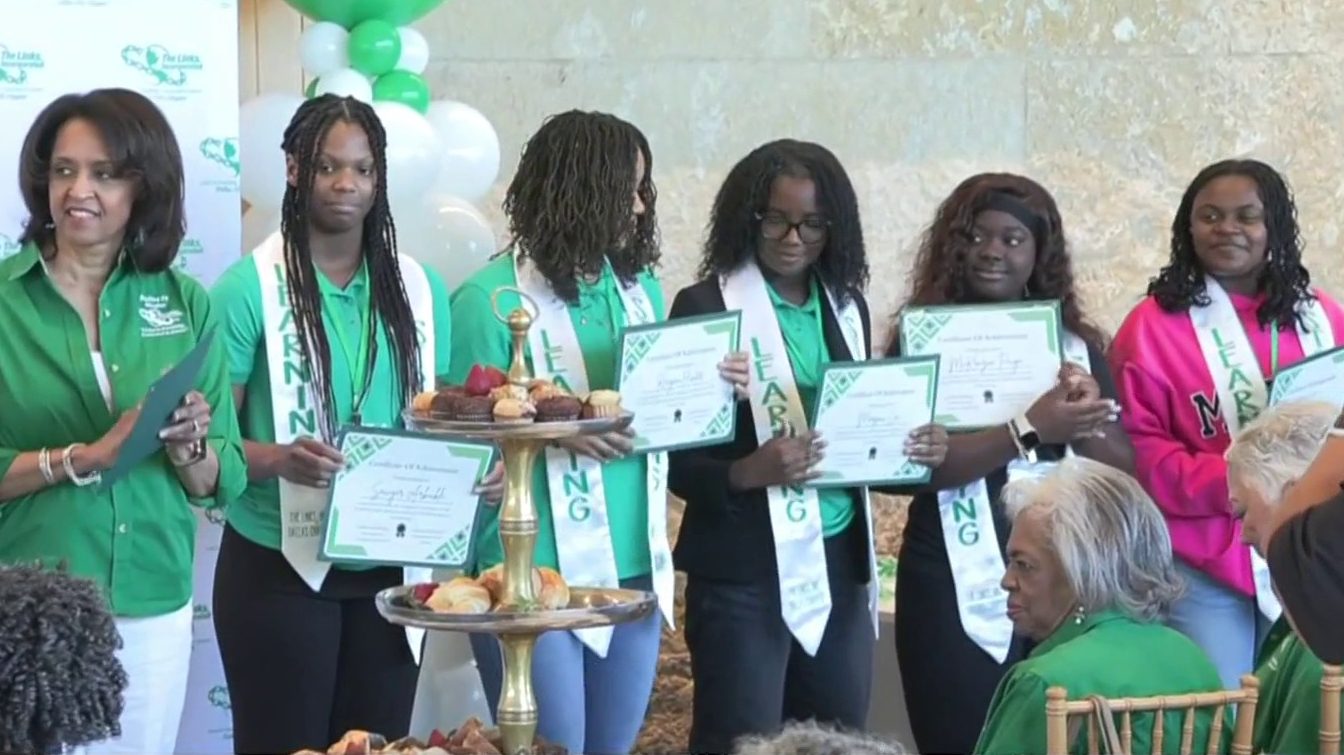Summer is the perfect time for fun with family -- and that fun can include learning! Reading Partners North Texas is encouraging parents to read with their children this summer. Not just reading, but really focusing on their child's strengths and weaknesses, and ways to improve on what they learned during the school year.
Reading Partners North Texas is the local organization that's part of the national children's literacy nonprofit, Reading Partners.
Their objective is to provide students with the support they need to read at grade level by fourth grade.
Jennifer Quick, community engagement officer with Reading Partners North Texas, said students who are reading below grade level in third grade are four times more likely than their peers to drop out of school before getting their high school diploma.
"A lot of work that we do with students is getting them to use words in context, using them in a sentence and then repeating, repeating, repeating, so that over time, they can build their vocabulary," Quick said. "Our real goal is to build up students' vocabulary so that they can have access and comprehend the reading as well."
In addition to the grade-specific reading list provided for the nine-week NBC 5 Reading With You summer initiative, Quick provided the below guide for parents to help with the reading process in young children:
What is my child working on?
Local
The latest news from around North Texas.
• Blending sounds to make words (m-a-t = mat)
• Identifying short and long vowel sounds (apple vs. take; egg vs. bean; igloo vs. like' dog vs. pole)
• Identifying the sounds of initial consonant blends such as "br" as in "bring" and "sm" as in "smell"
• Identifying combinations of letters that create a new sound (digraphs), for example: "ch," "th," or "sh"
• Identifying different long vowel patterns such as "ai" as in "maid" or "ea" as in "leaf"
• Identifying characters, plot, setting, problem and solution in a story
• Using text features, such as photos and labels, to learn from a nonfiction text
• Using the glossary to learn key vocabulary words in a nonfiction text
How can I help my child at home?
To help your child blend sounds to make words:
• Have your child guess a word that you sound out slowly (ssssssuuuuuunnnnn)
• Use magnetic letters to have your child spell and sound out new words
To help your child identify different vowel sounds:
• Write different long and short vowel words on a whiteboard or on strips of paper and have your child sort them into the categories: long vowel sound and short vowel sound. For example: leg (short), fog (short), leap (long), fine (long)
To help your child sound out consonant blends:
• Write several common initial blends (br-, sp-, fl-, cl-, sn-, sm-, sl-, tr-) on index cards and place them in a small bag. Have your child pick a card out of a bag and say the blend. Then, generate several examples of words that begin with this blend.
To help your child learn combinations of letters that make a new sound:
• Write several common digraphs (sh, wh, ch, th) on index cards and place them in a small bag. Have your child pick a card out of a bag and say the sound that these two letters make. Then, generate several examples of words that begin with this sound.
To help your child remember long vowel patterns:
• Use the rhyme: The first one does the talking, the second does the walking. For example, you only hear the "e" in the word "neat"
Use the following guide to enhance your child's understanding of the books they bring home, and to reinforce the following skills:
• Identifying characters, plot, setting, problem and solution in a story
• Using text features such as photos and graphs to learn from a nonfiction text
• Using the glossary to learn key vocabulary words in a nonfiction text
BEFORE reading:
• Read the title, author and illustrator
• Flip through the text and make a prediction about the story or information in the book
• Set a purpose for reading. For example: Let's read to find out more about _____
• If there is a glossary, preview key vocabulary terms before reading the book
DURING reading: Ask lots of questions!
• Who are the main characters?
• What is the setting of the story? Does it change at all throughout the book?
• What is the problem in the story?
• Why do you think the character said/thought [insert quote]?
• What words could you use to describe [character]?
• What do you think the author means by [quote from text]? Then share your thinking.
• What are the most important events in the story?
• For nonfiction: What is the main idea of the text?
• For nonfiction: What are the important supporting details that explain the main idea?
• For nonfiction: How do the photos or captions help you understand the topic?
• For nonfiction: What do the graphs/charts teach you about the topic?
AFTER reading:
• How was the problem solved?
• Retell the main events in the story.
• What did the main character learn in the story?
• For nonfiction: What did the author want you to learn about this topic?
• For nonfiction: What important information did you learn about the topic?
• For nonfiction: What questions do you still have about this topic? What would you like to learn more about?



